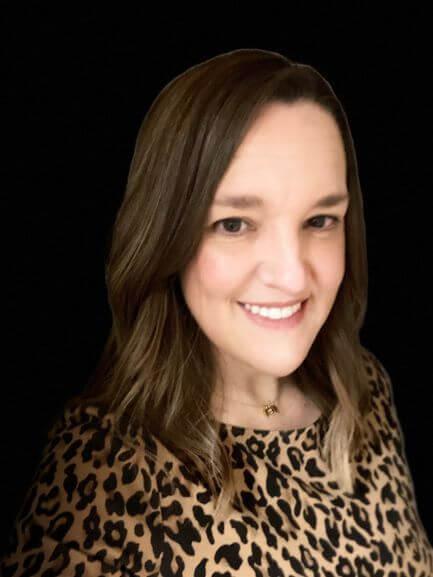FOCUS
Florida district ensures professional learning time is well-spent
By Kathryn Murrow and Betsy Leis
Categories: Career pathways, Coaching, DataAugust 2023
“I don’t have enough time” is a common answer we hear when asking coaches and administrators about barriers to implementing professional learning. As district-level administrators, we can empathize with our colleagues’ feelings of never-ending to-do lists, the proverbial clock ticking away in the back of our minds. To be successful, we knew that we had to figure out how to address time and implementation challenges. In our case, part of the work turned out to be more about what not to do instead of adding on more.
We have noticed, especially over the last few years, a growing number of urgent tasks and issues straining already overburdened educators. Instead of easing workloads, professional learning seemed to pile on more, leading to its abandonment. It wasn’t by choice that teachers weren’t following through, but a matter of priorities versus minutes in the day. We know that educator time is valuable and must be managed and allocated strategically. Even when that happens, we also know staff often work past contract hours, on weekends, and at home.
The trend in low implementation became clear as professional learning participants struggled to submit their implementation evidence. As a result, we examined our practices, had honest conversations about why some protocols were in place, and dug into whether they were helpful. By looking at the changing needs of instructors and being willing to rethink the existing system, we ultimately abandoned practices we could no longer justify using.
.@KathrynMurrow & @Betsy_leis understand educator time is valuable & must be allocated strategically. They remade their district’s professional learning coaching pathway to make every minute count. #ProfessionalDevelopment Share on XFirst, we discovered a need to replace the template for reporting professional learning feedback. Second, we changed the practice of mandatory prerequisite professional learning courses and allowed educators to take relevant classes when they needed them. Third, we increased the frequency of professional learning sessions while decreasing their duration.
Following are the three steps we took to carry out these changes, which reduced the time it took for a participant to implement professional learning, eased the reporting process, and made job-enhancing, just-in-time learning accessible to educators.
Remove cumbersome formatting requirements for implementation evidence
We used to require participants to submit evidence of implementation of practices or takeaways from professional learning in a standardized format. For example, after instructional coaching, participants had to record their reflections, coach feedback, and data in a specific template that was useful to us as district administrators but, it turned out, not to coaches or teachers.
When reviewing our implementation submissions, we often had a less than 10% return rate from participants. When reaching out to them, however, they told us they were implementing the learning but didn’t have time to transfer their evidence into our form.
As we visited schools, we observed where coaches were spending their time, often in “other duties as assigned,” including supervision, lunch duty, and filling vacancies. These were additional responsibilities on top of supporting teachers, facilitating professional learning communities (PLCs), modeling lessons, and other duties. Through informal conversations we understood their daily multitasking left them feeling they were not making an impact the way they had envisioned. With that in mind, we studied our submission format and realized the following three things.
1. The template reduced administrative time to review implementation evidence, but it created a burden for instructional coaches and teachers.
Instead, we wanted them to spend that time modeling or demonstrating instruction, ensuring common planning structures were effective, initiating coaching cycles, or aggregating and analyzing data to inform their work.
2. By standardizing the feedback template, it also constrained the information that teachers shared.
Our hope was to collect authentic data through honest feedback generation to better understand how schools and learning communities documented their coaching and instructional observations. We also wanted to see how coaches were naturally applying the learning from our sessions so we could then cater to their specific needs. But our form prevented this.
With over 200 schools in our district, we sought to streamline work by aligning our efforts, determining trends, and identifying exemplars. For example, we are always curious how data is collected by coaches — especially those new to the role — when they observe and support instruction. Ironically, we encouraged coaches to collect data in the unique ways that worked for them. When we mandated a specific format, we unintentionally removed instructional leader autonomy and missed out on important details.

3. This practice emphasized the disconnect between school and district personnel.
It showed that we were unfamiliar with the time demands faced by instructional staff, especially during and post-pandemic, which likely reduced teachers’ trust in us.
Remove prerequisite course requirements
In the past, we had multiple prerequisites for the majority of our professional learning. We believed these building block courses ensured educators acquired foundational concepts before deepening their learning. However, we discovered we were denying some the opportunity to experience personalized, relevant professional learning that would benefit their work. This issue was exacerbated by teacher and administrator shortages.
We previously required a mandatory certification course before instructional staff could take a more in-depth coaching course. But across the district, coaches are being moved into administrative positions and our teacher leaders, PLC leaders, and department leaders are being shifted into the instructional coach roles to support teachers’ needs.
When new coaches had to take a certification course that wasn’t available for months, they missed other coaching offerings that would allow them to better understand their new position, connect with coaches across the district, and have opportunities to safely practice coaching protocols. We were wasting staff time by making them engage in less relevant courses, slowing their professional growth.
An eye-opening conversation with a coach illustrates this point. She wanted to recommend a teacher leader for one of our professional learning offerings, but that person had not completed the required prerequisite. This person also did not have an official instructional coach job title. After consideration and talking with other school leaders, we realized how many coaching staff were not actually in coaching roles due to budgetary reasons.
Many of our coaches are titled resource teacher, testing coordinator, or they may be coaching and teaching simultaneously. There was a wealth of potential and capacity in our district that we were not harnessing. With this new knowledge, it became clear that our prerequisites seemed rigid and we needed to rethink the path for aspiring coaches or those with multidimensional roles.
Additionally, by establishing more robust relationships with coaches and school leaders, we had a heightened awareness of turnover effects. Many coaches were being promoted to assistant principals. Due to the frequency, there were often cases where strong teachers, PLC leaders, department heads, or others were moved into a coaching role with little or no experience. They needed professional learning more than anyone, but we had restrictions that would prohibit them from engaging in exactly the type of practice opportunities, networking, and support structures that they needed as they moved into a new role, often midyear.
To address this, we eliminated all barriers and prerequisites. Did it cause more work for us? Of course! We had to revise content, accelerate learning due to gaps in knowledge, and provide differentiated support that stretched our team. Was it worth it? Absolutely! Eliminating prerequisites increased our attendance in a coaching offering by over 60%.
If prerequisite classes stand in the way of getting coaches what they need to do their jobs well, remove them. That’s what @KathrynMurrow & @Betsy_leis did after careful examination of their professional learning system.… Share on XOur new coach participants, who had little knowledge of the role, expressed their thanks because the professional learning resources and support were just what they needed. As a result, we have been able to make increased connections and support our coaches in their new career journeys, and we couldn’t be happier with our decision. New coaches are now more effective because they have what they need, when they need it. This is a great improvement over participating in a mandatory, one-size-fits-all continuum of courses.
We realized we could and should do more. Our next step is to consider implementation quality and the time it takes participants to efficiently implement the new learning in relevant, job-embedded ways. We are also examining the amount of time required to understand, implement, reflect, and refine the skills we are teaching. One of the ways we are addressing this is with our third program adjustment.
Restructure our professional learning: increase in frequency, decrease in session length.
When reviewing our professional learning offerings, we noticed that many of them were full-day courses. There are times a full day may be necessary to cover the content in the time allotted by the school calendar, but when we looked at the amount of learning taking place and the implementation outcomes, it was clear that some of the missing evidence for implementation was due to cognitive overload.
In an August session for new coaches, a participant emailed to apologize for having to step away. During the lunch break, we briefed her on what she missed. She launched into an explanation of the discipline issue that needed attention and also asked a lot of questions about the coaching cycle. We learned she had just transitioned into the coaching from teaching geometry, had no formal coaching experience, and was still teaching some classes due to vacancies.
Further, she was trying to facilitate a math PLC but had no experience doing that. To top it off, her assistant principal was also new. The more she talked, the more we realized how overwhelmed she was. We ended up modifying some content for her, and set up some one-on-one time later to talk her through some of the things she seemed stressed about. Per her request, we later worked side by-side as she coached so she could receive feedback.
She was so eager to learn, but had little time to devote to mastering the job due to so many other urgent duties. This is one of many examples we encountered in taking the time to have conversations, gauge educator needs, and address some of their concerns through professional learning.
Like the geometry teacher, many participants come to professional learning sessions late or have to leave early because being out of their building for a full day is a challenge for all educators. These educators miss learning time, which creates extra stress when trying to catch up and causes confusion when trying to implement new concepts and skills because they only have a partial grasp on them.
To address this, we restructured many of our full-day professional learning offerings into four shorter sessions. Participants now spend less time away from their day-to-day responsibilities and have more time to implement digestible chunks of learning and reflect on them with us at the next session.
The graphic above shows how we transformed our instructional coaching professional learning. With the new structure, new coaches spend more time with us by about four hours total, and we anticipate coaches will be able to more fully immerse themselves in and apply their learning by spreading it out. We will facilitate this series at the start of each semester so the content is relevant to the timing of the school year. This way coaches can progress successfully through the learning while adding tools, strategies, and techniques to their toolboxes, implementing as they go.
A clear path for learning
Going forward, we hope the changes we made to our professional learning system will make a measurable difference. By removing unwieldly formatting requirements, we cleared a path for receiving feedback in ways that were not only authentic and meaningful to participants, but also less time-consuming. Additionally, we adjusted our professional learning requirements so that teacher leaders can take courses to enhance their work right when they need it, rather than having to wade through less relevant prerequisites. Finally, we restructured teacher professional development experiences into shorter sessions, which were easier for participants to synthesize and apply and required less time away from their daily duties, therefore easing the burden of finding coverage.
Categories: Career pathways, Coaching, Data
Recent Issues
WHERE TECHNOLOGY CAN TAKE US
April 2024
Technology is both a topic and a tool for professional learning. This...
EVALUATING PROFESSIONAL LEARNING
February 2024
How do you know your professional learning is working? This issue digs...
TAKING THE NEXT STEP
December 2023
Professional learning can open up new roles and challenges and help...
REACHING ALL LEARNERS
October 2023
Both special education and general education teachers need support to help...












